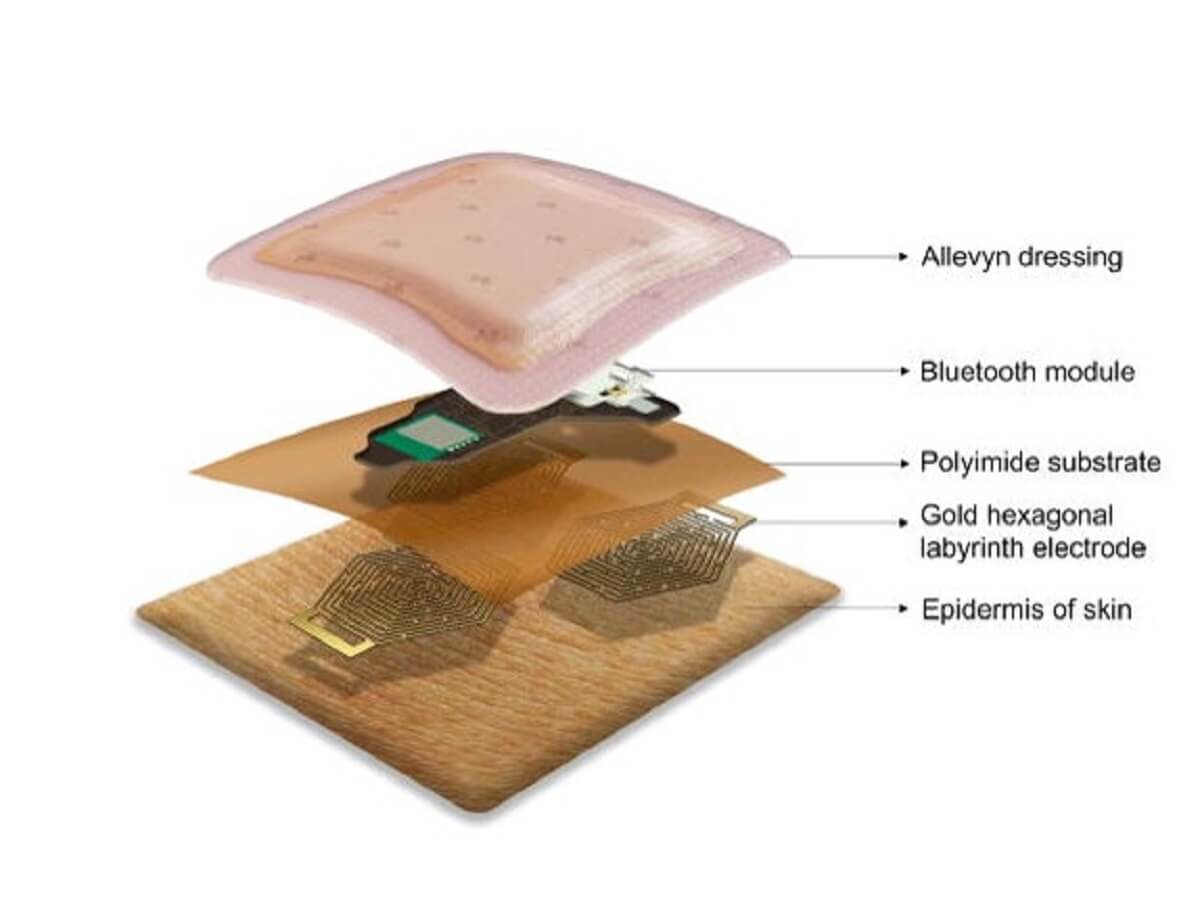MELBOURNE, Australia — A revolutionary wearable ECG (electrocardiogram) patch developed by scientists could potentially save the lives of countless patients with heart issues. This innovation allows patients to continuously monitor crucial health indicators using a device that looks like a bandage.
Researchers from Australia highlight the device’s ultra-light design and wireless technology, marking a significant advancement over traditional wearable ECGs. According to the British Heart Foundation (BHF), nearly 200 million people globally suffer from coronary heart disease, a leading cause of death.
Wearable ECGs are instrumental in detecting cardiovascular issues and evaluating cardiac health. A collaborative effort between Australian and Indian scientists has led to the creation of this enhanced ECG patch, aiming to improve point-of-care diagnostics.
“We did a deep dive into the world of wearable ECG devices,” says study author Peter Elango, a Ph.D. candidate at RMIT University in Australia, in a media release. “We focused on a critical aspect, how the design and materials of the electrodes impact their performance, and the findings were quite illuminating.”

He notes that traditional ECG devices use Ag/AgCl, or “wet,” electrodes with a conductive gel to improve electrical signaling. However, these electrodes often cause discomfort, skin irritation, and have a tendency to dry out.
The new study emphasizes the benefits of using active dry electrodes for ECG signaling. The researchers successfully demonstrated a promising prototype through this approach.
“Dry electrodes offer some significant advantages. They prioritize user comfort, remain durable over time, and reduce the likelihood of skin irritation. These attributes make them ideal for continuous monitoring, a crucial feature for wearable ECG devices,” Elango explains.

The research delves into how the performance of dry electrode sensors is influenced by factors such as contact area, conductivity, and stability of electrical contact. The team explored various tight space geometry-based dry electrodes and assessed how different body parts affect ECG measurements.
Following extensive experimentation, they developed a compact, lightweight, gel-free hexagonal-shaped ECG patch, which they deem “ideally suited” for point-of-care diagnostics. This configuration was further integrated with wireless Bluetooth for remote sensing capabilities.
“These portable ECG patches could revolutionize remote and ambulatory healthcare, and perhaps even preventive medicine. They’re light, they can wirelessly transmit data, and they’re adept at discerning various states of rest or activity,” adds Elango. “Whether used in a clinical setting, seamlessly integrated into everyday attire, or worn as wearable devices, they could redefine how we monitor cardiac health.”
The study is published in the journal Applied Physics Reviews.
Why is coronary heart disease so deadly?
CHD is so deadly because it can damage or destroy the heart muscle. The heart is a vital organ, and it cannot function properly without a good blood supply. When the heart muscle is damaged, it can lead to a number of serious health problems, including heart attack, angina (chest pain), and heart failure.
How can coronary heart disease be prevented?
There are a number of things you can do to prevent CHD, including:
- Eat a healthy diet. A healthy diet for the heart is low in saturated and trans fats, cholesterol, and sodium. It is also high in fruits, vegetables, and whole grains.
- Maintain a healthy weight. Being overweight or obese increases your risk of CHD.
- Exercise regularly. Exercise helps to strengthen the heart muscle and improve circulation.
- Don’t smoke. Smoking damages the arteries and increases the risk of CHD.
- Control your blood pressure and cholesterol. High blood pressure and high cholesterol are both risk factors for CHD.
South West News Service writer Stephen Beech contributed to this report.

